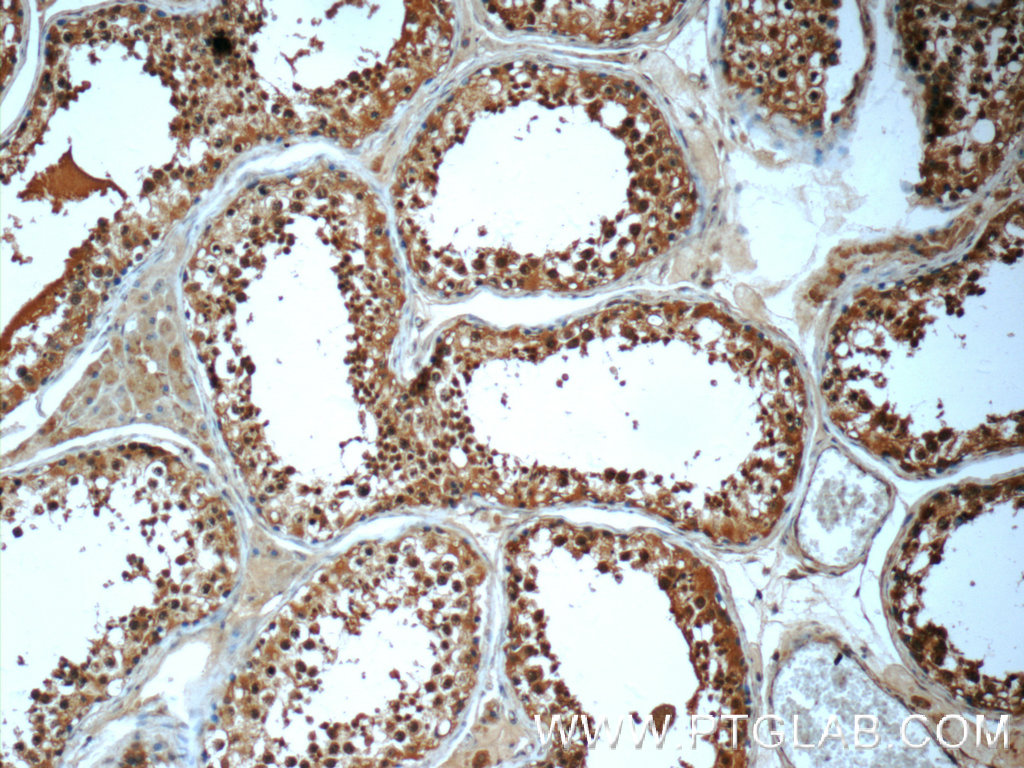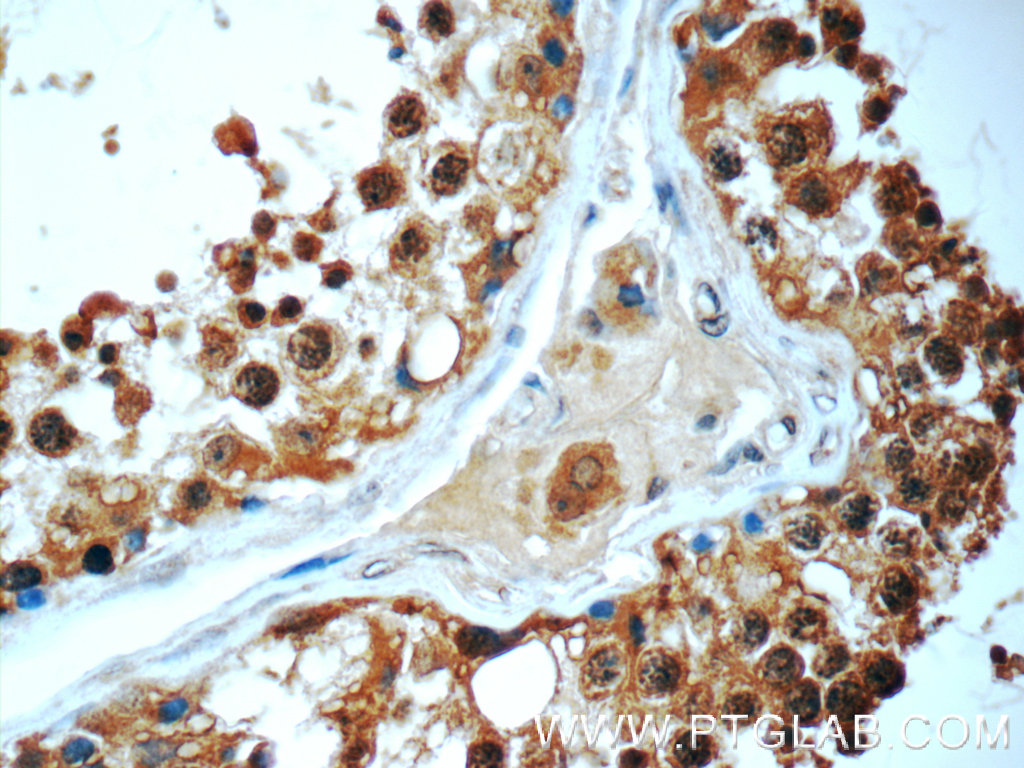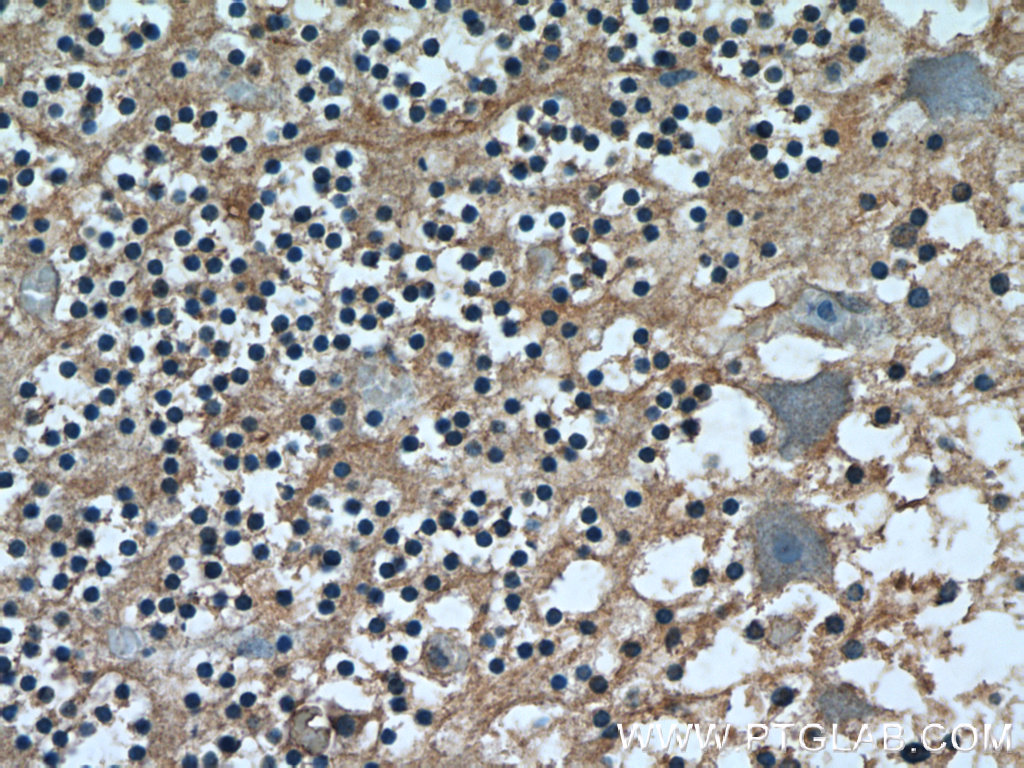HYDIN Polyclonal antibody
HYDIN Polyclonal Antibody for IHC,ELISA
Host / Isotype
Rabbit / IgG
Reactivity
human
Applications
IHC,ELISA
Conjugate
Unconjugated
验证数据展示
经过测试的应用
| Positive IHC detected in | human testis tissue, human cerebellum tissue Note: suggested antigen retrieval with TE buffer pH 9.0; (*) Alternatively, antigen retrieval may be performed with citrate buffer pH 6.0 |
推荐稀释比
| Application | Dilution |
|---|---|
| Immunohistochemistry (IHC) | IHC : 1:20-1:200 |
| It is recommended that this reagent should be titrated in each testing system to obtain optimal results. | |
| Sample-dependent, Check data in validation data gallery. | |
产品信息
The immunogen of 24741-1-AP is HYDIN Fusion Protein expressed in E. coli.
| Tested Applications | IHC,ELISA |
| Tested Reactivity | human |
| Immunogen | HYDIN fusion protein Ag10732 种属同源性预测 |
| Host / Isotype | Rabbit / IgG |
| Class | Polyclonal |
| Type | Antibody |
| Full Name | hydrocephalus inducing homolog (mouse) |
| Synonyms | HYDIN, HYDIN1, HYDIN2, KIAA1864 |
| Calculated Molecular Weight | 721aa,82 kDa; 5120aa,560 kDa |
| GenBank Accession Number | BC028351 |
| Gene Symbol | HYDIN |
| Gene ID (NCBI) | 54768 |
| RRID | AB_2879700 |
| Conjugate | Unconjugated |
| Form | Liquid |
| Purification Method | Antigen affinity purification |
| UNIPROT ID | Q4G0P3 |
| Storage Buffer | PBS with 0.02% sodium azide and 50% glycerol pH 7.3. |
| Storage Conditions | Store at -20°C. Stable for one year after shipment. Aliquoting is unnecessary for -20oC storage. |
背景介绍
实验方案
| Product Specific Protocols | |
|---|---|
| IHC protocol for HYDIN antibody 24741-1-AP | Download protocol |
| Standard Protocols | |
|---|---|
| Click here to view our Standard Protocols |



